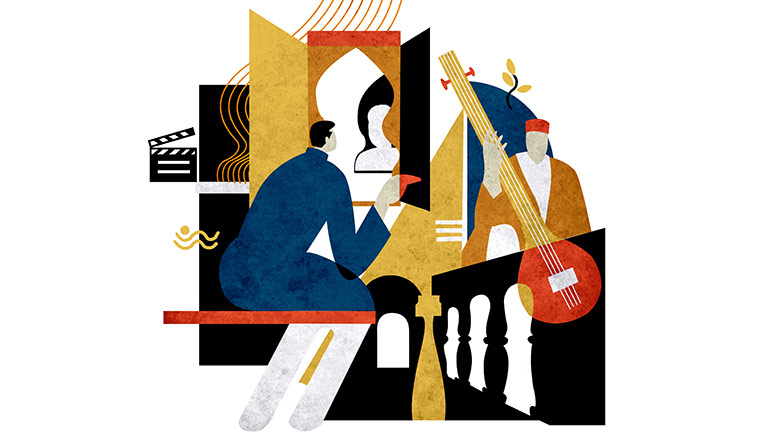IN THE WORDS of eminent Marathi writer P.L. Deshpande (known as PuLa), “It is not enough to just say I am a Marathi. It is important to define if you are a Punekar, Mumbaikar or Nagpurkar as that really defines what kind of a Maharashtrian you are.”That explains a lot about Marathi surnames, too. Tendulkars are people who come from Tenduli, or Manjrekars come from Manjargaon.
I am a Punekar who is ‘evolving’to become a Mumbaikar. I say this because growing up in Pune, especially in old Pune, is like being a derby horse with blinders on. Punekars are known for their ignorance about the rest of the world, which includes the rest of Maharashtra. For us, Pune is the centre of the universe. The state is divided into six regions with six totally different landscapes and dialects. But if I have a right to comment, criticise, praise or get nostalgic about any part of Maharashtra, I would restrict myself to Pune and Mumbai. Pune is my janmabhoomi and, like most Marathi filmmakers, Mumbai is my karmabhoomi.
I grew up in the heartland of Pune, born and brought up in the Peth area. For the first eight years of my life, I lived in Sadashiv Peth. It is the most regressive, conservative, old part of Pune. I often joke that though my physical age is 40, my mental age is hardly 32, as growth cannot happen when you stay in a Peth. Although when I lived in Sadashiv Peth, it was extremely charming. I grew up in a wada. It is a type of old stone/brick housing society with a very unique style of architecture. There is a huge rectangular courtyard at its centre and multiple rooms circling the courtyard. Usually, there is one malak (owner) and multiple birhad (tenants). We had three rooms, thanks to caste privilege. Sadly, I grew up in a casteist society with zero awareness of it. But the upside of wada living was that the neighbours’doors were always open, so no matter how much the society tried to divide us through caste, the aroma of food wafting through from other homes forced us to break the boundaries. The common courtyard served as everything―from a badminton court, a papad drying area to a marriage hall. People used to yell across the courtyard to have normal conversations. One could just sit in his own house and watch multiple stories being played at once. It was like having multiple content screens open all the time. This is probably where I got my roots in storytelling.
Later, we moved to Asia’s fastest growing suburb―Kothrud. Those who have watched Bajirao Mastani will get the context for these places easily. Peth is where Bajirao Peshwa lived with his wife, while Kothrud is where he kept his muse/mistress. Most aboriginal Punekars often make this move from Peth when they want to liberate themselves just a little bit. Peth happens to be the birthplace for the Ganesh festival and the Deccan Education Society. Kothrud-Karve Nagar is the area where the American company Cummins tied up with top Marathi industrialist, Kirloskar. This sort of defines my trajectory for sociopolitical awareness, too.
Although growing up in old Pune was not that bad, pretty enriching actually. However conservative it sounds, Pune is highly educated and culturally vibrant. In Marathi, we have a word called vyasanga. It literally means diameter. But when one claims his vyasanga is wide, it means that the person has been exposed to a lot of literature, art and culture. The kind of cultural bombarding that used to happen growing up here in the 1990s had an unknowing impact on my vyasanga, too. I still remember attending the Gandharva festival at the age of five. My entire family used to attend the all-night festival. The likes of Bhimsen Joshi, Zakir Hussain and Bismillah Khan were regulars at this festival. My brother and I were too young to appreciate classical music. Mostly, we would just doze off on our parent’s lap by midnight, while these maestros performed in the background as if singing us lullabies.
Also read
- Living a life of forbidden pleasures in Lucknow
- From Bengal to Gujarat to Kerala to Tamil Nadu, what makes us really unique?
- The Gujju guide to being economical and ecological
- Here is what happens when a Malayali Man meets the bottle
- The Bengali love for all kinds of sound and food
- Your inner Punjabi-ness lies deep within you, hardcoded in your DNA
If you are a real Punekar, exposure to theatre is unavoidable. As soon as you enter class 11, most of the biggies in Marathi theatre have one degree of separation from you. Maharashtra has a buzzing inter-collegiate theatre culture. Thanks to this, all my theatre schooling has happened in my commerce college. Culture for teenaged Punekars is freedom. The cultural awakening begins with a simple teenage drive of finding ways to stay out of the house under the pretext of theatre rehearsals, dance practices or a dhol pathak (drum circle) rehearsal. While beating the dhols or having an extremely milky coffee with sutta (cigarette) in the middle of the night, seniors from the cultural groups play the dangerous game of name-dropping. From writers like Orhan Pamuk to Girish Karnad, and filmmakers like Satyajit Ray to Jean-Luc Godard, no one is left alone. The Pune intellects have an opinion about everyone. They are often referred to as kattyavarche buddhijivi (coffee shop intellects).
I am 40 now and I have stayed in Pune for three quarters of my life. So no matter how hard I try to be a Mumbaikar, I will not be able to take the Punekar out of me.
Sarang Sathaye is a director, actor and cofounder of the Marathi digital brand, Bhadipa


